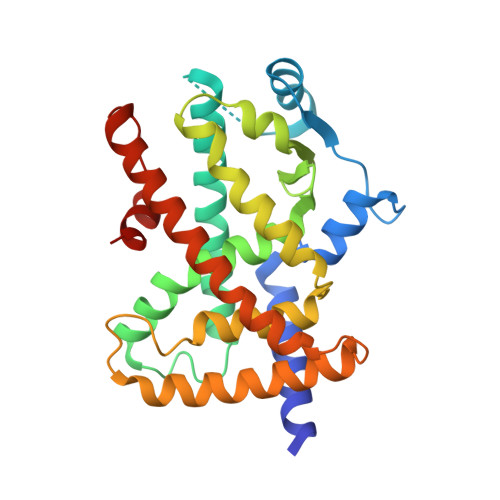Cooperative cobinding of synthetic and natural ligands to the nuclear receptor PPAR gamma.
Shang, J., Brust, R., Mosure, S.A., Bass, J., Munoz-Tello, P., Lin, H., Hughes, T.S., Tang, M., Ge, Q., Kamekencka, T.M., Kojetin, D.J.(2018) Elife 7
- PubMed: 30575522
- DOI: https://doi.org/10.7554/eLife.43320
- Primary Citation of Related Structures:
5UGM, 6AUG, 6AVI, 6MCZ, 6MD0, 6MD1, 6MD2, 6MD4 - PubMed Abstract:
Crystal structures of peroxisome proliferator-activated receptor gamma (PPARγ) have revealed overlapping binding modes for synthetic and natural/endogenous ligands, indicating competition for the orthosteric pocket. Here we show that cobinding of a synthetic ligand to the orthosteric pocket can push natural and endogenous PPARγ ligands (fatty acids) out of the orthosteric pocket towards an alternate ligand-binding site near the functionally important omega (Ω)-loop. X-ray crystallography, NMR spectroscopy, all-atom molecular dynamics simulations, and mutagenesis coupled to quantitative biochemical functional and cellular assays reveal that synthetic ligand and fatty acid cobinding can form a 'ligand link' to the Ω-loop and synergistically affect the structure and function of PPARγ. These findings contribute to a growing body of evidence indicating ligand binding to nuclear receptors can be more complex than the classical one-for-one orthosteric exchange of a natural or endogenous ligand with a synthetic ligand.
- Department of Integrative Structural and Computational Biology, The Scripps Research Institute, Jupiter, United States.
Organizational Affiliation:


















